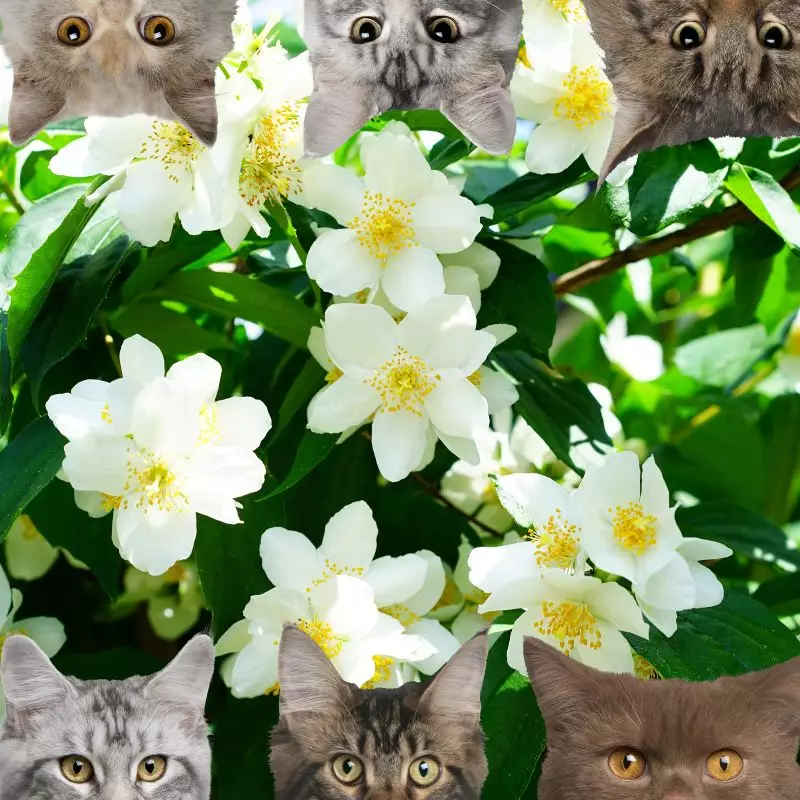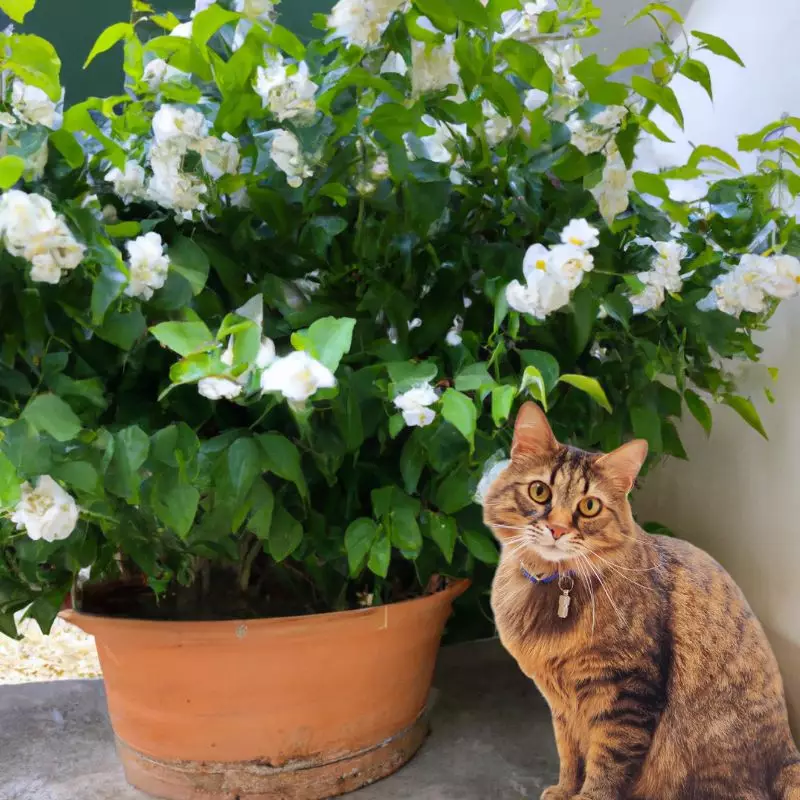True jasmine, from the Jasminum genus, is not toxic to cats. It’s vital to note, however, that while genuine jasmine poses no threat, many plants are colloquially named “jasmine” but do not belong to the Jasminum genus. Some of these can be harmful to our feline friends. Before purchasing or planting any “jasmine,” always ensure it’s the non-toxic variety for your cat’s safety.
This article is written in close collaboration with a team of experienced DVMs (doctors of veterinary medicine). Their valuable input ensures that we provide the most accurate and up-to-date information concerning the potential risks associated with various plants, including Jasmine, and their effects on cats. Furthermore, our research is backed by high-authority sources such as the ASPCA and PetMD to ensure the reliability of every piece of information.
Can Cats Eat Jasmine?

While Jasmine is categorized as a safe plant for cats, the ASPCA warns that if cats swallow it, it can cause gastrointestinal distress. The explanation behind this is that cats are carnivorous and do not have enough enzymes in their stomach to digest plant material. As a result, consuming too much plant stuff can induce indigestion and other GI issues in cats.
You should also be conscious of the products you use on your plants. Some of the plant care products contain hazardous chemicals that can cause poisoning in your feline companions.
What is Jasmine?

You might be amazed to learn how many distinct shapes jasmine can take and how many plants go by one name. According to the USDA Natural Resources Conservation Service, the genus Jasminum contains 12 distinct kinds of real jasmine plants. They range from vining common jasmine (Jasminum officinale), often known as hardy jasmine, with fragrant white summer flowers to evergreen winter jasmine (Jasminum nudiflorum).
Jasmine is a bushy, trailing shrub with yellow winter blossoms that thrives in the United States. It belongs to the olive family genus of shrubs and vines (Oleaceae). It is home to over 200 species endemic to Eurasia, Africa, and Oceania’s tropical and warm temperate zones. Jasmines are frequently grown for the distinctive aroma of their blossoms.
Jasmine shrubs and vines can be upright, spreading, or climbing, and can be deciduous or evergreen. Their leaves can be simple, trifoliate, or pinnate, and are borne in an opposing or alternating pattern. The blooms have a diameter of around 2.5 cm. They are usually white or yellow, however, they might be somewhat reddish in rare cases. The blooms are borne in cymose clusters of at least three blossoms, although they can also be found solitary on the tips of branchlets.
Keeping Cats Away From Jasmine

Keep your plants in a place inaccessible to your cats. Placing them on a high shelf or in a room that they cannot access will also prevent them from touching your plant.
You can also use natural deterrents to drive your cats away from your plants. Making your own deterrent is also possible by diluting vinegar with water. Spraying this solution on your plants will drive cats away as they detest the smell and taste of vinegar.
Plants to Avoid For Your Cats
If you are a cat owner and unsure if the plants growing in your yard are harmful to your cats, check out this list of toxic plants for cats. You can also check our list of non-toxic plants for cats.





